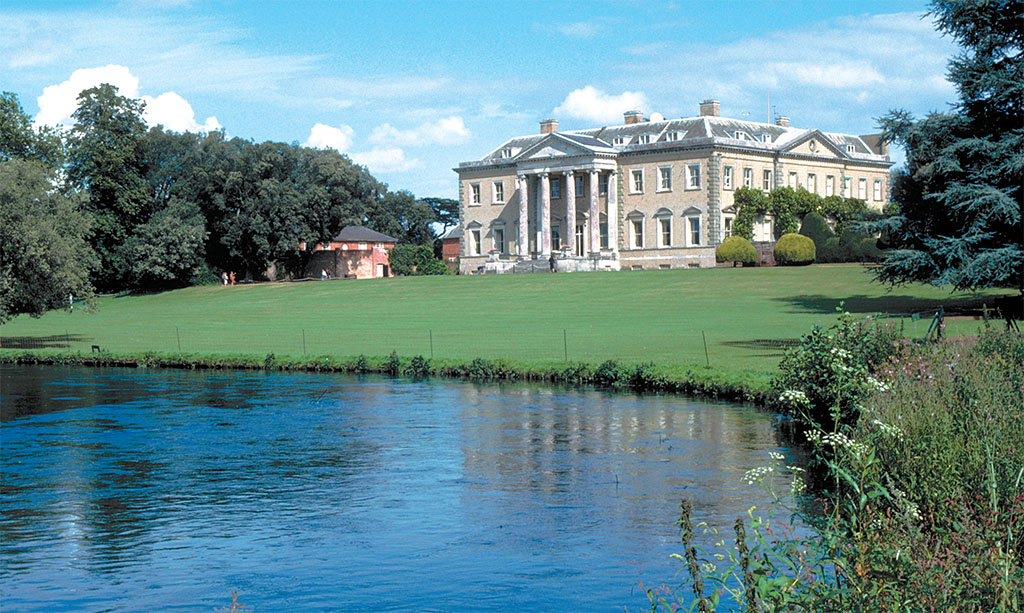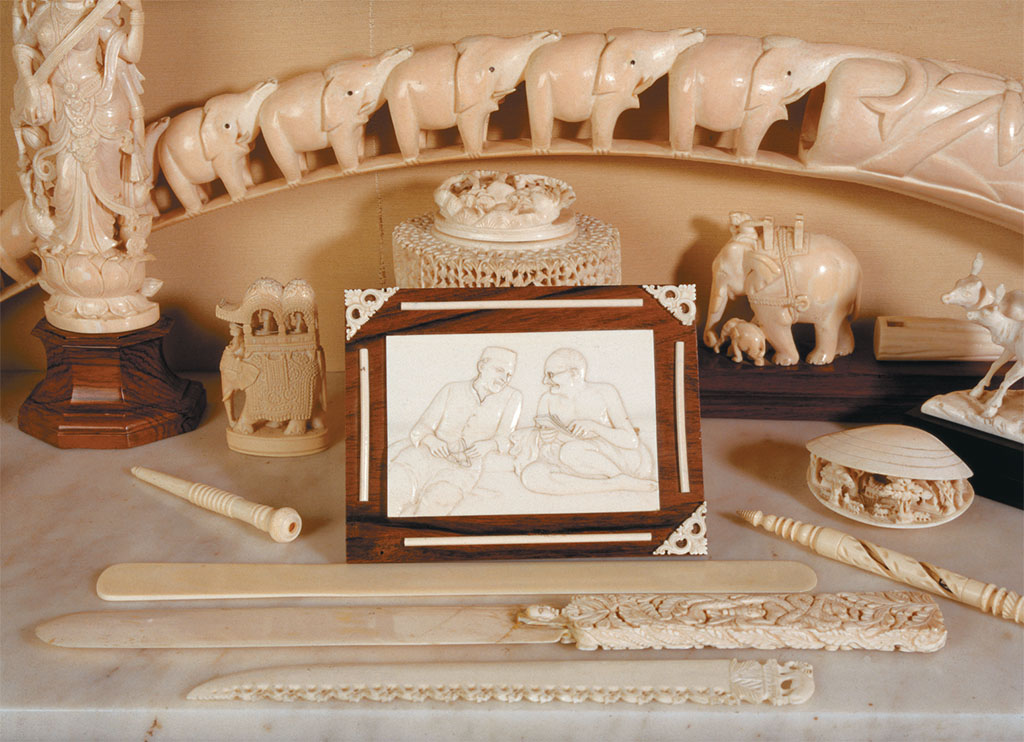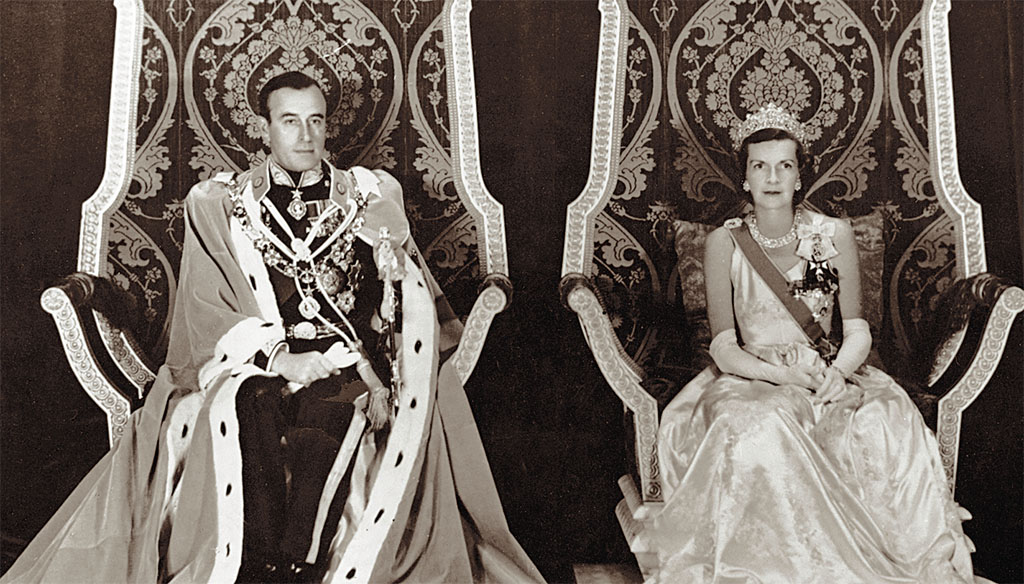
Broadlands: Lord Mountbatten’s country home
“I STILL CAN‘T BELIEVE what has taken place,” Prince Charles wrote in his diary on the evening of August 27, 1979. Just before noon that day, his confidant, mentor and great-uncle Lord Louis Mountbatten had been the victim of an IRA bombing while vacationing with his family in Ireland. Charles was awash in “agony, disbelief, [and] a kind of wretched numbness.” The nation and much of the rest of the world mourned with the prince at the loss of the war hero and statesman.
His Serene Highness, Prince Louis of Battenberg was born to Princess Victoria—favorite granddaughter of Queen Victoria—on June 25, 1900, at Frogmore House, weighing in at 8 pounds, on the grounds of Windsor Castle. Queen Victoria visited almost immediately and commented, “He is a beautiful large child.” The aged monarch asked the infant’s parents to call him Albert, after her late, beloved consort, and the boy was christened Albert Victor Nicholas Louis Francis, but fondly called Dickie.
In 1913 at age 13 Dickie followed his father and brother into the Royal Navy. World War I broke out a year later, and with it came hostility toward anything connected to Germany. As a result, Dickie’s father, a German-born prince, complied with the nation’s wishes and resigned his position as Britain’s first sea lord in October 1914, two months into the war. Three years later the Battenbergs anglicized their Teutonic name to Mountbatten, and Prince Louis was made the first Marquess of Milford Haven. (That same year the British royal family adopted the surname Windsor.) Dickie thus became Lord Louis Mountbatten.
After attending the Royal Naval Colleges of Osborne and Dartmouth, in 1916 Mountbatten began two years of service at sea during the Great War, rising to sublieutenant, second-in-command over a crew of 50 aboard P.31. After the war ended, Lord Louis accompanied his cousin Edward, the Prince of Wales, on two extended tours abroad. While on the second excursion, Mountbatten invited Edwina Ashley, a young debutante and heiress whom he had been dating, to meet him in India, where he proposed, and she accepted. They were married on July 18, 1922; the Prince of Wales served as best man. The couple began their honeymoon at beautiful Broadlands in Hampshire, an estate that Edwina would inherit in 1939 and that would become their country home.
When World War II broke out, Lord Louis, now a captain, commanded the 5th Destroyer Flotilla from aboard HMS Kelly. His time with Kelly would become the stuff of legends and a movie. On two separate occasions Kelly suffered substantial damage, once from a mine and then a torpedo. Both times Lord Louis managed to get it home and repaired.
Mountbatten’s exploits won him wide recognition, and in March 1942 Prime Minister Winston Churchill appointed the young captain chief of combined operations, with the honorary rank of lieutenant general and air marshal. In this capacity, Lord Louis worked long hours planning invasions in North Africa, Italy and France. At the same time, he also served on the Chiefs of Staff Committee, which oversaw the military conduct of the war.
[caption id="SmallMuseums_img1" align="aligncenter" width="1024"]

WWW.BRITAINONVIEW.COM
Yet more responsibility came with Lord Louis’s 1943 appointment as the supreme Allied commander of the South East Asia Command. For this post he was given the acting rank of admiral—making him the youngest admiral or supreme commander in Royal Navy history. His orders called for him to recover Burma, but morale of the Allied troops serving there had hit bottom. Lord Louis addressed the problem by touring the fronts and telling the troops: “I hear you call this the Forgotten Front. I hear you call yourselves the Forgotten Army. Well, let me tell you that this is not the Forgotten Front, and you are not the Forgotten Army. In fact nobody has even heard of you. But they will hear of you because this is what we are going to do….” The Allied force succeeded in recapturing Burma in August 1945.
[caption id="SmallMuseums_img2" align="aligncenter" width="1024"]

ANNA CLOPET/CORBIS
For his success in Burma, the United States later awarded Mountbatten the Army Distinguished Service Medal, with top honors coming from six other Allied countries for his outstanding wartime service. In Britain he was created Viscount Mountbatten of Burma, made a Knight of the Garter and given the Freedom of the Sword of Honour of the City of London.
[caption id="SmallMuseums_img3" align="aligncenter" width="1024"]

HULTON-DEUTSCH COLLECTION/CORBIS
After the war, Prime Minister Clement Attlee appointed Lord Louis as the last viceroy of India, where he oversaw the 1947 transfer of power from the British government to the Indian people. For his service there, Lord Louis was made Earl Mountbatten of Burma.
On his return to England in June 1948, Mountbatten resumed his naval career and rose rapidly through the ranks. In 1955 he was appointed first sea lord and chief of the naval staff—the same position from which his father had been forced to step down in 1914. It was the first instance in Royal Navy history of a father and son gaining so high a rank. His star continued to rise. A year later he was promoted to admiral of the fleet, and later chief of the defense staff and chairman of the Chiefs of Staff Committee. For his extraordinary service to monarch and nation, on the day that he retired from naval service in July 1965, Queen Elizabeth invested him with the very rare Military Order of Merit, along with other honors and titles.
In retirement Mountbatten continued to work with private organizations, but with Edwina’s 1960 death came money worries. The earl consequently decided to open Broadlands to the public. The May 19, 1979, grand opening was well orchestrated, with Prince Charles appearing to “borrow” the admission money and with the retired war hero on hand to show the Prince of Wales around. In the months that followed, Lord Louis surprised many visitors by greeting them during their tour. According to Lord Romsey, Mountbatten’s grandson and the current proprietor of Broadlands, “He was a showman at heart, and I know how much genuine pleasure he derived from the successful opening of his house.”
Sitting on the banks of the River Test and surrounded by lush grounds, Broadlands stands as one of the finest examples of mid-Georgian architecture in England. Entering the manor house through the front door, visitors make their way into rooms that for centuries have entertained royalty and foreign dignitaries. The first stop on the guided tour is the octagonal Domed Hall with its coffered ceiling and decorative plasterwork. This room and nearby Sculpture Hall showcase many of the ancient Greek and Roman marble busts and statuettes from the Broadlands collection, along with more recent 18th-century pieces.
The sun-colored walls of the expansive Dining Room feature three sumptuous Van Dyck portraits that depict King Charles I, Queen Henrietta Maria and a “Madame Vinck.” Henry Holland designed the room in 1788, including the richly detailed ceiling wreath painted in warm ivory colors. A handsome 18th-century mahogany sideboard with flanking pedestals stands at one end of the long formal dining table that dominates the space.
Earl and Lady Mountbatten entertained in the Saloon, but the center of family life for them, as well as for the current Lord and Lady Romsey, was the Drawing Room. Here it is easy to picture the family resting comfortably by the fireplace in the room’s overstuffed chairs and ottomans. A stunning array of 18th- and 19th-century portraiture adorns the walls, while breathtaking views of the grounds pour into the room’s oversize windows.
Other areas open to the public include the Wedgwood Room, the Oak Room, the Palmerston Room and the Gun Room—each boasting a unique appeal and featuring artifacts that reflect the former and current inhabitants. Although only a few rooms of this private home are open to the public, the sights, smells, textures and impressions of what is accessible bring to mind the many layers of the magnificent house’s history.
Adjacent to the house stands the stable, which holds the Mountbatten Exhibition. Lord Louis’uniforms, military decorations, photographs, trophies and mementos combine here to reflect the life of the sailor, statesman and naval commander. Prince Charles opened the exhibit on May 9, 1981, two years after the death of his friend.
It was while vacationing at Classiebawn Castle, County Sligo, Ireland, that Lord Louis was killed. Earlier on that August day a party of the family boarded the earl’s fishing boat for a brief excursion. They planned to check his lobster pots, and as Lord Louis puttered from shore and made his first stop, the bomb on board detonated. Those killed outright included Earl Mountbatten, his 14-year-old grandson Nicholas and Paul Maxwell, a 15-year-old boat boy. Mountbatten’s daughter and heir Lady Patricia, her son Timothy (Nicholas’twin brother) and her husband, Lord Bradbourne, eventually recovered from their severe wounds. Lord Bradbourne’s mother, who had also been on board, died of her wounds the next day.
At a memorial service held in St. Paul’s Cathedral the following December, Prince Charles delivered a moving address in which he paid tribute to the “real moral courage” of Lord Mountbatten, a quality for which “I adored him and why so many of us miss him so dreadfully now.” The Prince of Wales concluded with a few lines he paraphrased from Laurence Binyon’s 1914 poem “For the Fallen”: “They shall not grow old as we are left to grow old. Age shall not weary them, nor the years condemn. At the going down of the sun and in the morning—we will remember him.”
Broadlands too will remember.
MUSEUM NOTES
Broadlands, Romsey, Hampshire SO51 9ZD
Phone: 01794 505010
Touring Season: Broadlands will be open June 29 until September 1 for the 2005 season. For full details of times and prices of admission, please contact the administration offices.
E-mail: [email protected]
Web: www.broadlands.net





Comments